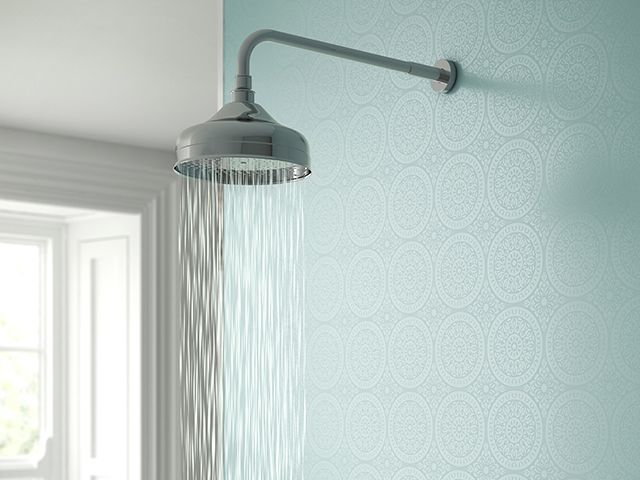
Shower heads: everything you need to know
Finding the perfect mix of power, spray coverage and temperature control can give you a serious case of Goldilocks syndrome when browsing the huge selection of shower heads out there.
Many of the features of your shower, including temperature control, are contained within the shower valve. However, it’s the shower head is responsible for controlling the spray and flow of water.
If you’re unhappy with your current shower head, it’s relatively easy to retro-fit a new one to your existing shower system if you check compatibility before you buy.
This means you don’t need to install a whole new system to freshen up your showering experience.
We’ve answered some of the most common questions about shower heads, and weighed up the benefits of the different types available so you can make an informed decision.
How do shower heads work?
It’s actually a really simple tool. When the water comes through the types through the use of pressure, the shower head is the final destination.
The head acts as a container with various exits, these are spaced out in a way to maximise coverage and therefore allow the water to flow out of the shower and onto you. It’s like a sieve but instead of filtering into two categories, it filters the water into many categories, leaving through separate doors.
Can shower heads increase water pressure?
Yes, installing a high pressure shower head with a higher flow rate will increase water pressure, as this will force more water through the holes.
This will then provide a more invigorating shower, even if the low pressure is caused by your home’s plumbing. It’s recommended to install a shower head with a high flow rate of 2.5 gpm or more if you’d like a strong pressure in your shower.
You can also experiment with an adjustable shower head to find the desired flow. A low flow shower head often has a valve to maintain lower pressure. The key is to find one that suits your needs, choosing an adjustable or high-flow model can increase pressure. Although, if the issue lies in your plumbing it might not solve the problem.
A new shower head isn’t the only answer to improving your pressure. Cleaning the mineral build up can also improve the water pressure, as well as fixing any underlying plumbing issues within your home.
How often should I swap my shower head?
You should be changing your shower head every six months if you can.
This is because general wear and tear of processing hot and cold water on a regular basis can cause degradation in the shower head.
This can then create a build up of rust, limescale and gunk. To ensure you stay clean and the shower remains at its best, aim for the six months mark.
If you live in a hard water area, you might want to change it every four months instead. This is because the higher concentration of minerals means the water will cause degradation at a faster rate.
Why would I have two shower heads?
You might find in some homes, and often in nice hotels there are two shower heads available.
This is because it provides different types of spray or stream, providing the user with a wider range of coverage and different water flow.
Dual shower heads provide flexibility, comfort and a spa-like experience but will require ample space and good water pressure in order to work effectively.
Which shower head is the one for me?
Whether you’re changing just the head, or replacing the entire fixture, here’s what to look for when shopping for shower heads…
Fixed or handheld?
A fixed shower head may come directly out of the wall or ceiling, or may be connected to a shower riser rail.
Though it may have an adjustable head, you won’t be able to remove it to use it as a handheld shower.
Fixed shower heads have become more popular with the rising trend in rainfall showers.
A handheld shower with a hose is a useful option, especially when you have to shower children or pets. This can be affixed in a shower holder also and act like a standard fixed shower when the need arises.
The choice between a fixed shower head and one that can be handheld may come down to personal preference.
However, there’s no reason why you can’t incorporate both styles into one shower space to make it more versatile, like this sleek shower column from Frontline Bathrooms.
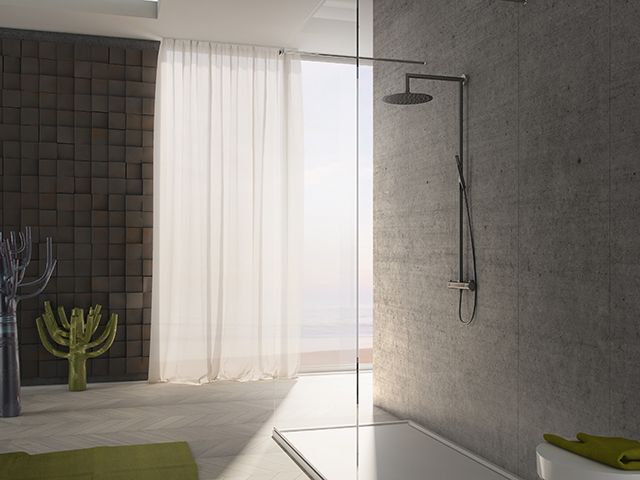
- Sleek thermostatic shower column, £695 from Frontline Bathrooms – buy here
Jet spray or rainfall?
A rainfall shower will have a lot of jets, spread out across a larger shower head.
They are designed, as the name suggests, to recreate a more natural style of showering – wide and even, as if you’re under a rain cloud.
Rainfall heads are a fixed head style, but some retailers also offer rainfall-style body jets for more targeted showering of the body.
Jet shower heads can be fixed or on a hose. But, they are generally a better option for those who like some power in their shower, as the spray is more focussed on a smaller target area.
Want the best of both worlds from one model? Hansgrohe’s Rainfinity has an adjustable head with jets ranging from PowderRain to RainStream spray modes.
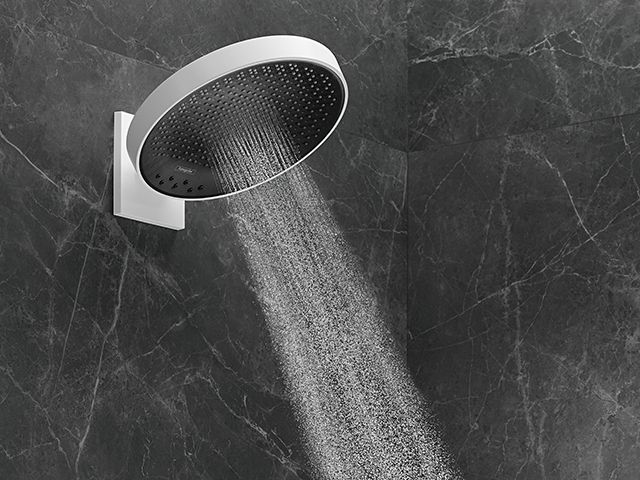
- Rainfinity shower head, prices vary, discover and shop at hansgrohe.co.uk
Eco-options
We already know that showering is a more environmentally friendly option than running a bath as it uses less water.
However, did you know that you can make an even more eco-choice by specifying a water-saving shower head?
The feature you want to pay attention to is the amount of litres a shower uses per minute. The lower the number, the more efficient the shower.
Look for models that cleverly deliver water jets, often by mixing water with air to reduce the number of litres needed for a luxurious spray coverage.
Methven’s Aio range features Aurajet technology which delivers an enveloping shower spray, while only using 9 litres of water per minute.
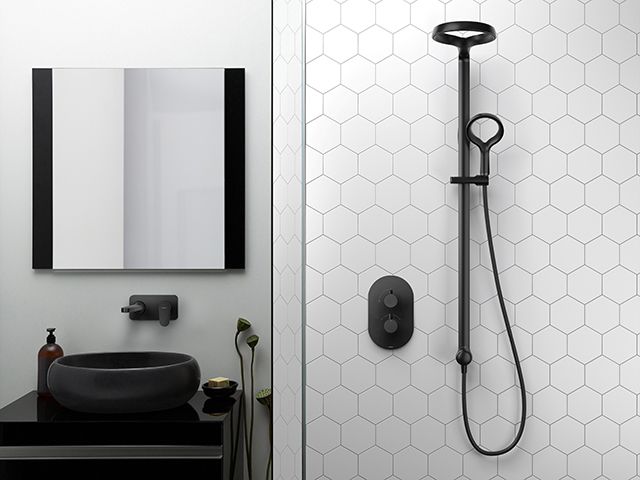
- Aurajet AIO shower system, £1,129.05 from Methven – buy here
Smart controls
Showers with smart controls are a growing trend in the bathroom, helping to create your dream shower situation before having to set foot under the jets.
While many are tied in with temperature controls, Grohe’s Rainshower 310 SmartConnect can be used to control the shower head and specify either a rainfall or jet spray using a Bluetooth connected remote.
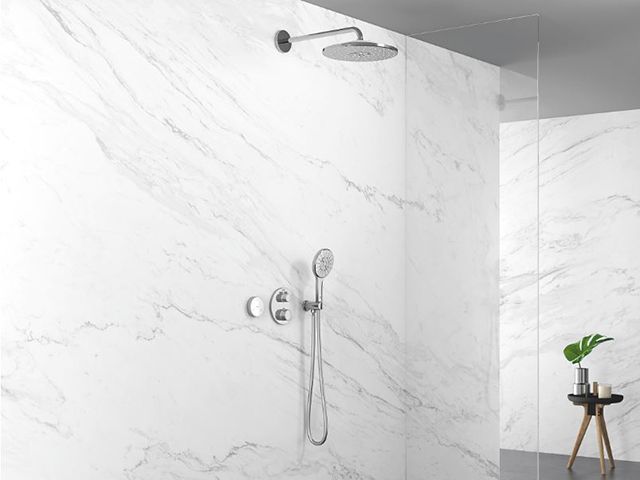
- Grohe Rainshower Smart Connect 310 shower head and arm with wireless remote, £460.79 – buy here




